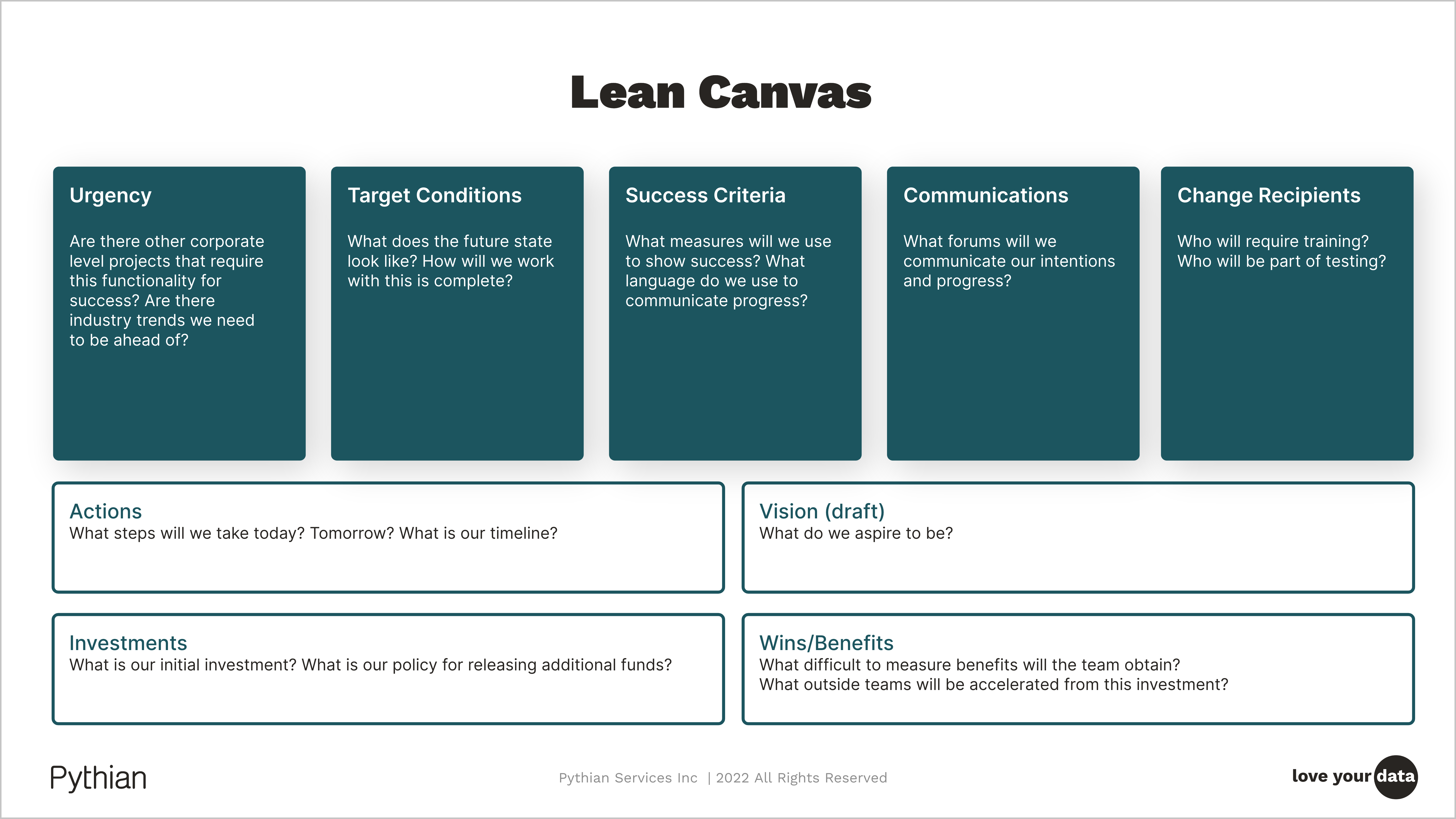In our
previous post we discussed creating a data strategy storyboard. This first asset is important to align our executive and working teams on the measures and work tracks of our data strategy.
Next, we explore the Lean Canvas (LC) – a tool to assist teams in identifying and documenting conditions and actions to drive successful implementation of specific use cases that drive forward our data strategy. The LC is the final output from discovery and discussion processes to ensure alignment across an organization and build consensus through discussion and debate. Many organizations subscribe to a “disagree and commit” principal, the LC is a powerful tool to ensure team members have an opportunity to debate and a work product to share widely that ensures alignment on the agreed execution plan and objectives.
Begin by choosing the top five to seven (5-7) use cases identified as high value and impactful to the organization. Do not worry, at this time, about absolute value measures of the use cases. We will discuss prioritization later. At this stage, it is only critical that the selected use cases are the most impactful to the business, measured by driving revenue growth or operational cost savings. For each of the use cases identified, invest two hours with diverse stakeholders and complete the nine (9) categories on the LC. This will spur important decisions to be made, support the identification of areas for future research and initiate the documentation of communications and change receipts that will feed into our program management and change management planning.

When you first organize the group to complete the LC, everyone should have the same understanding of the idea. The person that came up with the idea and how it will affect the organization is responsible for sharing this context. This is most effectively shared with a short-form document that everyone can review and mark-up with questions prior to the LC working session. Addressing any preliminary question ahead of the LC working session will empower the team to focus intently on meaningfully completing the session with a clear understanding of the context. There may also be times that teams cannot complete the LC with a single working session. Teams may need to do research or wait for other key decisions to be made. This is OK. The key is to facilitate a process that ensures the output is high quality, trustworthy and supported by other organizational changes.
The Lean Canvas is a tool for documenting the impact of a specific use case on our data strategy. When used as a tool, it assists in creating muscle memory for the organization – in collaboration and debate – with the outcome being a path the organization can rally around for execution in parallel. Leverage the LC in your own organization as a path to driving important discussion, ensuring full coverage in planning and creating valuable assets to use as new team members are onboarded.
In our next post, we will explore methods for prioritizing the endless list of good ideas that come from data strategy work. Inevitably, every discussion will bring up new ideas for use cases and applications of data. Often, the challenge is just prioritizing these ideas to identify where to begin work in a way that is most impactful.




No Comments Yet
Let us know what you think